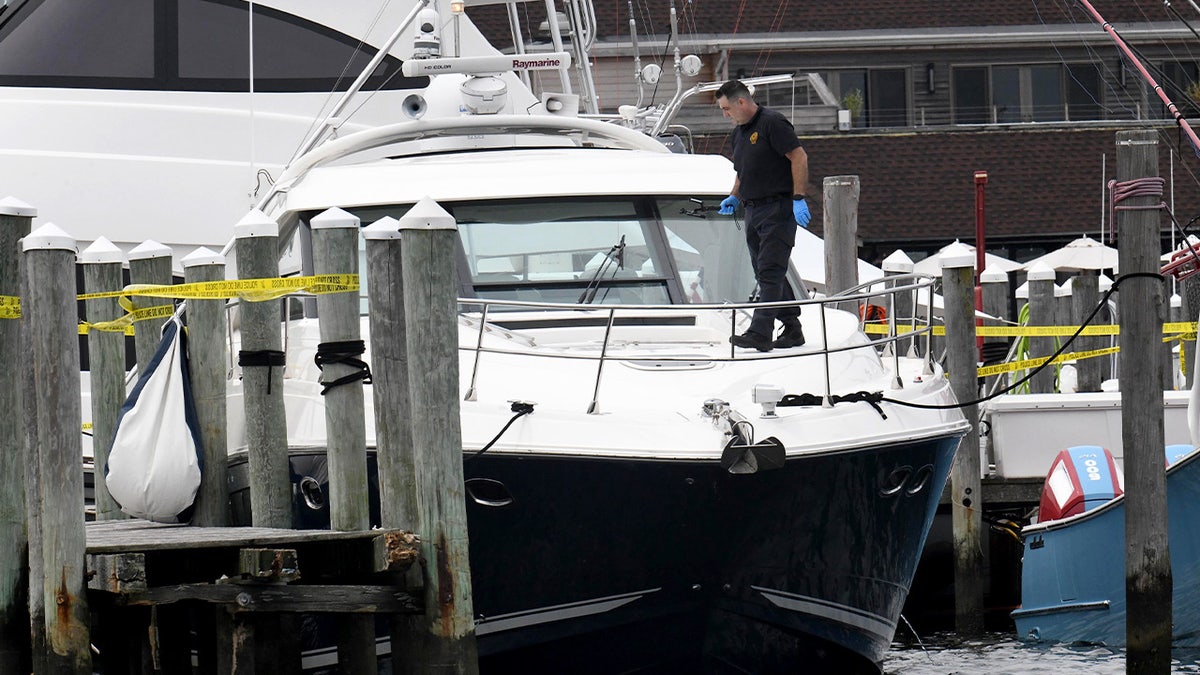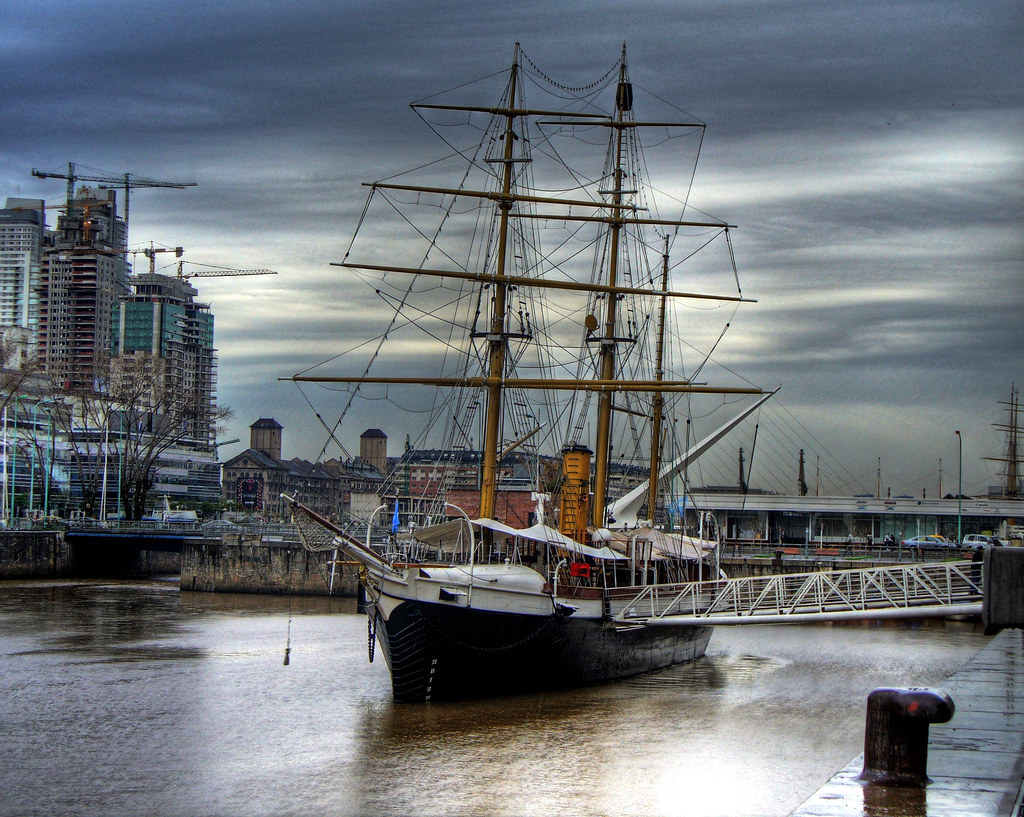
For centuries, the high seas have served as both vital conduits for global commerce and treacherous hunting grounds for those who seek to profit from maritime vulnerability. Tales of cunning sea raiders, driven by greed and the promise of plunder, have long captivated the imagination, painting a picture of audacious exploits and formidable challenges. Yet, for every legend of success, there exist countless untold narratives of miscalculation, moments when fortune dramatically turned against the aggressor.
Piracy, despite its romanticized portrayals, is inherently a high-stakes endeavor, demanding meticulous planning, accurate intelligence, and an astute understanding of one’s target. The allure of a seemingly defenseless merchant vessel, laden with valuable cargo, often blinds pirates to the potential for peril. It is in these moments of profound misjudgment, particularly when a warship is mistaken for a commercial vessel, that the true, brutal consequences of underestimation manifest. The predictable pursuit of easy wealth transforms into a stark encounter with overwhelming military might.
This article delves into remarkable instances where pirates’ miscalculations led them into troubled waters, transforming what they believed would be swift victories into crushing defeats. These episodes, spanning centuries and oceans, serve as powerful cautionary tales, illustrating the critical importance of target identification and the often-deadly repercussions of underestimating the formidable defenses of a military vessel. From historical warships to modern naval assets, these encounters reveal the enduring perils that await those who dare to attack the wrong target.

1. **The Fateful Encounter of USS Cape St. George and USS Gonzalez (2006)**
In a stark demonstration of modern naval power confronting audacious piracy, an incident unfolded on March 18, 2006, off the coast of Somalia. The Ticonderoga-class guided missile cruiser USS Cape St. George (CG 71) and the Arleigh Burke-class guided missile destroyer USS Gonzalez (DDG 66) were actively patrolling these international waters. Their mission, as part of Task Force 150, was explicitly to deter acts of piracy, a threat that had grown increasingly prevalent in the region.
During their patrol, the warships observed a vessel towing a number of smaller skiffs, a common modus operandi for pirate groups operating in the area. A boarding party from the USS Gonzalez was dispatched to investigate this suspicious activity. As the U.S. Navy personnel approached, they encountered individuals on the skiffs brandishing rocket-propelled grenade launchers, an unmistakable sign of hostile intent. The situation escalated rapidly.
The pirates aboard the skiffs then initiated an attack, opening fire on the USS Cape St. George. The cruiser sustained minor damage from this unexpected assault. In immediate response, both the USS Cape St. George and the USS Gonzalez, along with the boarding party, returned fire. A contemporary CNN.com report described the U.S. Navy’s response as utilizing “small arms.” The engagement resulted in the main pirate vessel being set afire and subsequently sinking. Two smaller skiffs were captured, along with 12 pirates and one body, marking a decisive naval victory. The Virginian-Pilot reported that the wounded were initially taken to the amphibious assault ship USS Nassau (LHA 4) for treatment. In a perplexing aftermath, the pirates who survived this near-catastrophic failure in their victim-selection process were eventually released and repatriated back to Somalia, while a Somali pirate group incongruously claimed that 27 “coast guardsmen” had been dispatched.
Military equipment: USS Constitution
Builder:: Col. George Claghorn, Edmond Harrt’s Shipyard
Service:: USN
Armament:: 32 24-pounder long guns; 20 32-pounder carronades; and, two 24-pounder bow chasers
Propulsion:: 42,710 sq. ft. of sail on three masts.
Speed:: 13+ knots
Crew:: 450 including 55 Marines and 30 boys (1797)
Categories: Ships and Submarines, Navy Ships and Submarines, Special Mission Ships and Submarines, Navy Equipment
Get more information about: USS Constitution
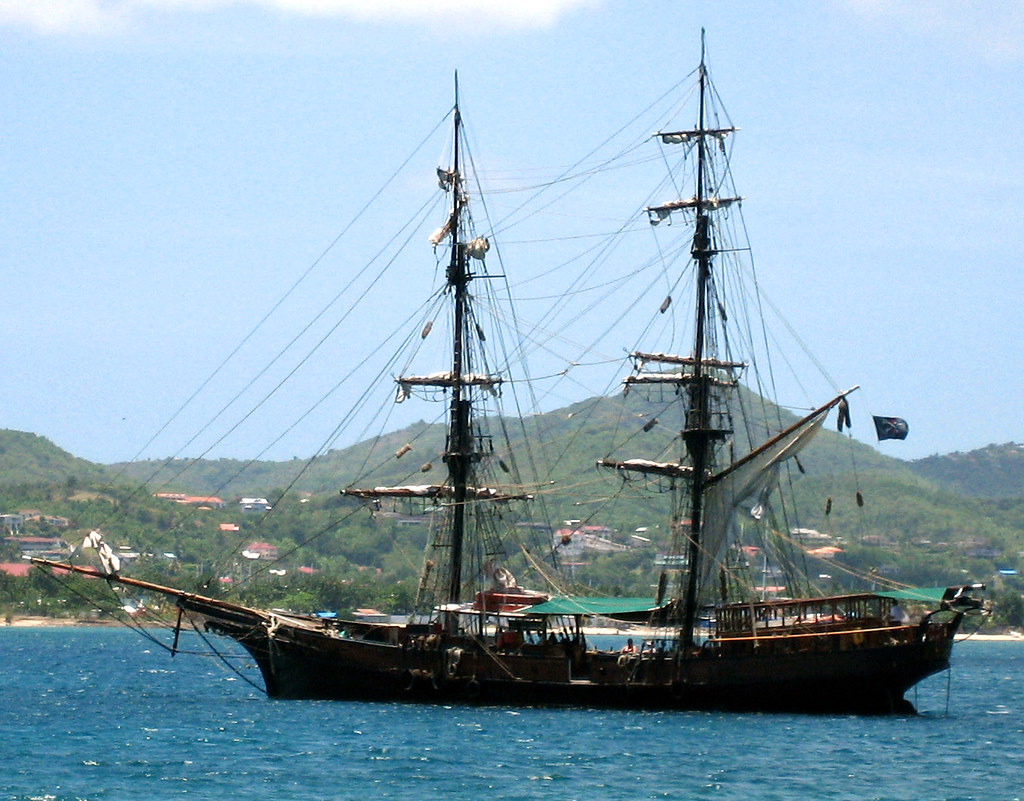
2. **The USS Constitution Incident (1812)**
The year 1812 marked a significant chapter in naval history, and it was in this period that pirates in the Caribbean made a profound miscalculation that would become a classic example of maritime misjudgment. Spotting a ship from a distance, these pirates believed they had stumbled upon an easy target, presuming it to be a merchant vessel laden with valuable goods. Such an error in identification would prove to be catastrophic for their ambitions of plunder.
To their horror and ultimate undoing, the vessel they had chosen to target was none other than the USS Constitution. This formidable American warship, renowned for its robust construction and superior firepower, was far from the defenseless cargo carrier they had anticipated. The pirates quickly found themselves outmatched and overwhelmed by the Constitution’s impressive array of weaponry and its highly trained crew. Their initial predatory approach swiftly transformed into a desperate fight for survival.
In a dramatic sea chase, the pirates’ vessels were outmaneuvered by the agile and powerful warship. Their attempts to escape the overwhelming force they had mistakenly engaged were futile. The USS Constitution Incident stands as a stark reminder of how appearances on the open sea can be dangerously deceiving, and how a simple error in reconnaissance can lead to an inevitable and crushing defeat for those who underestimate their prey.
Military equipment: USS Constitution
ShipImage: File:USS Constitution fires a 17-gun salute.jpg
ShipCaption: Dressing overall
ShipCountry: United States
ShipFlag: USN flag
ShipName: USS Constitution
ShipNamesake: Constitution of the United States
ShipOrdered: 1 March 1794
ShipBuilder: Edmund Hartt
ShipOriginalCost: *$302,718
ShipLaidDown: 1 November 1794
ShipLaunched: 21 October 1797
ShipMaidenVoyage: 22 July 1798
ShipRenamed: Constitution 1925
ShipReclassified: No classification, 1 September 1975
ShipIdentification: International Code of Signals
ShipHomeport: Boston Navy Yard
ShipNickname: Old Ironside
ShipStatus: Ship in active service
ShipBadge: File:USS Constitution crest.png
ShipNotes: Samuel Nicholson
ShipOperator: US Navy
ShipClass: Frigate
HeaderCaption: [object Object]
ShipType: 44-gun United States-class frigate
ShipTonnage: 1,576
ShipDisplacement: 2,200 tons
ShipLength: 304 ft
Abbr: on punt
ShipBeam: 43 ft
ShipHeight: 198 ft
ShipDraft: 21 ft
ShipHoldDepth: 14 ft
ShipDecks: Orlop
ShipSailPlan: 42710 sqft
ShipPropulsion: Sail (three masts, ship rig)
ShipSpeed: 13 kn
ShipBoats: 36 ft
ShipComplement: 450, including 55 Marines and 30 boys (1797)
ShipArmament: 20 × 32-pounder (15 kg) carronade,2 × 24-pounder (11 kg) bow chasers
ShipCrew: 75 officers and crew
Embed: true
Name: USS Constitution (Frigate)
NrhpType: nhl
Location: Charlestown Navy Yard, Charlestown, Massachusetts
Coordinates: Coord
Locmapin: Boston#Massachusetts#USA
Built: 1797
Architect: Joshua Humphreys
Added: 15 October 1966
Refnum: 66000789
Website: https://www.nps.gov/bost/learn/historyculture/ussconst.htm
Categories: 1797 ships, All articles containing potentially dated statements, Articles containing potentially dated statements from July 2025, Articles using NRISref without a reference number, Articles with short description
Summary: USS Constitution, also known as Old Ironsides, is a three-masted wooden-hulled heavy frigate of the United States Navy. She is the world’s oldest commissioned naval warship still afloat. She was launched in 1797, one of six original frigates authorized for construction by the Naval Act of 1794 and the third constructed. The name “Constitution” was among ten names submitted to President George Washington by Secretary of War Timothy Pickering in March or May the frigates that were to be constructed. Joshua Humphreys designed the frigates to be the young Navy’s capital ships, and so Constitution and her sister ships were larger and more heavily armed and built than standard frigates of the period. She was built at Edmund Hartt’s shipyard in the North End of Boston, Massachusetts. Her first duties were to provide protection for American merchant shipping during the Quasi-War with France and to defeat the Barbary pirates in the First Barbary War.
Constitution is most noted for her actions during the War of 1812 with the United Kingdom, when she captured numerous British merchantmen and five warships: HMS Guerriere, Java, Pictou, Cyane, and Levant. The capture of Guerriere earned her the nickname “Old Ironsides”, adding on the public adoration that had repeatedly saved her from scrapping. She continued to serve as flagship in the Mediterranean and African squadrons, and she circled the world in the 1840s. During the American Civil War, she served as a training ship for the United States Naval Academy. She carried American artwork and industrial displays to the Paris Exposition of 1878.
Constitution was retired from active service in 1881 and served as a receiving ship until being designated a museum ship in 1907. In 1934, she completed a three-year, 90-port tour of the nation. She sailed under her own power for her 200th birthday in 1997, and again in August 2012 to commemorate the 200th anniversary of her victory over Guerriere.
Constitution’s stated mission today is to promote understanding of the Navy’s role in war and peace through educational outreach, historical demonstration, and active participation in public events as part of the Naval History and Heritage Command. As she is a fully commissioned Navy ship, her crew of 75 officers and sailors participate in ceremonies, educational programs, and special events while keeping her open to visitors year round and providing free tours. The officers and crew are all active-duty Navy personnel, and the assignment is considered to be special duty. She is usually berthed at Pier 1 of the former Charlestown Navy Yard at one end of Boston’s Freedom Trail.
Get more information about: USS Constitution

3. **The Battle of the Scheldt (17th Century)**
In the 17th century, a group of pirates, driven by the lure of easy plunder, navigated their way into the Scheldt estuary. Their objective was a seemingly defenseless trading town, which they believed would offer little resistance to their aggressive intentions. This was a grave miscalculation, rooted in a fundamental lack of understanding of the local maritime defenses and strategic importance of the region. They approached with expectations of a swift and profitable raid, only to find a far more formidable challenge awaiting them.
Instead of a vulnerable commercial hub, the pirates encountered the well-fortified Dutch fleet. This formidable naval force was not only prepared but actively positioned to defend its waters, possessing a robust defense infrastructure and experienced crews ready for engagement. The pirates, operating under the dangerous assumption of an unchallenged victory, were met with an unexpected barrage of cannon fire, a stark and immediate rebuttal to their aggressive advance.
Caught entirely off-guard by the Dutch navy’s strength and readiness, the pirates’ ships were either destroyed or captured in the ensuing engagement. This incident unequivocally highlights the perils of underestimating one’s enemy, particularly in strategically important waterways. It also underscores the critical importance of local knowledge and thorough intelligence gathering before launching any offensive. The pirates’ severe miscalculation led to a significant defeat, serving as a poignant historical reminder of the fine line between fortune and failure on the high seas.
Military equipment: Battle of the Scheldt
Conflict: Battle of the Scheldt
Partof: Allied advance from Paris to the Rhine
Caption: Landing Vehicle Tracked,Scheldt
Date: 2 October – 8 November 1944
Place: Zeeland
Coordinates: 51|25|N|4|10|E|region:NL_type:event_scale:50000,title
Result: Allied victory
Territory: Antwerp
Combatant1: Canada|1921,United Kingdom,{{flagicon,Poland,1928,Polish Armed Forces in the West
Combatant2: flagcountry
Commander1: {{flagicon,United Kingdom,Bernard Montgomery
Commander2: flagicon,Gustav-Adolf von Zangen
Units1: [object Object],First Canadian Army,flagicon,I Corps (United Kingdom)
Units2: flagicon,15th Army (Wehrmacht)
Strength1: more than 450,000
Strength2: 230,000
Casualties1: Canadian: 6,367,Total: 20,873
Casualties2: Roughly 10–13,000,41,043 captured
Campaignbox: Campaignbox Western Front (World War II)
Canadian military actions in World War II
Campaignbox Liberation of the Netherlands
Categories: 1944 in Belgium, 1944 in the Netherlands, 20th century in Antwerp, All articles with unsourced statements, Allied logistics in the Western European Campaign (1944–1945)
Summary: The Battle of the Scheldt in World War II was a series of military operations to open up the Scheldt river between Antwerp and the North Sea for shipping, so that Antwerp’s port could be used to supply the Allies in north-west Europe. The operations were carried out by the First Canadian Army, with assistance from Polish and British units which had been attached. The action was under the acting command of the First Canadian’s Lieutenant-General Guy Simonds. The battle took place in the vicinity of the Scheldt river in northern Belgium and southwestern Netherlands from 2 October to 8 November 1944.
The Canadians had been delayed, and the need to clear the Scheldt had not yet been addressed, due to Allied decisions up to that point to focus instead on Arnhem (Operation Market Garden), Boulogne (Operation Wellhit), Calais (Operation Undergo) and Dunkirk. By the time the Canadians were sent into the Battle of the Scheldt, the Wehrmacht defenders had been reinforced. The Germans staged an effective delaying action during which they flooded land areas in the Scheldt estuary and slowed the Allied advance. After five weeks of difficult fighting, the Canadian First Army, at a cost of 20,873 Allied casualties (6,367 of them Canadian), was successful in clearing the Scheldt after numerous amphibious assaults, obstacle crossings and costly assaults over open ground.
Once the German defenders were no longer a threat, it took another three weeks to de-mine the harbours; the first convoy carrying Allied supplies could not unload in Antwerp until 28 November 1944. Once Antwerp was opened, it allowed 2.5 million tons of supplies to arrive at that port between November 1944 and April 1945, which were critical to the successful Allied advance into Germany in 1945.
Get more information about: Battle of the Scheldt

4. **The Capture of HMS Sceptre (Late 1700s)**
During the late 1700s, an era marked by widespread maritime conflict and a constant threat of piracy, a group of opportunistic sea raiders set their sights on what they perceived to be a vulnerable merchant ship. Driven purely by avarice, they intended to capture this vessel and claim its cargo. However, their intelligence was critically flawed, leading them directly into a confrontation far beyond their capabilities and expectations.
Unbeknownst to these pirates, the target they had chosen was HMS Sceptre, a formidable British warship. As they advanced and closed the distance, the pirates gradually began to realize the true nature of the vessel, but by then, it was tragically too late to reverse course or retreat. The element of surprise had vanished, replaced by the grim reality of their immense error. The ensuing battle was, as expected, fierce, with the British crew defending their ship with unwavering determination and superior military training.
The pirates faced a crushing defeat, their vessels succumbing to the relentless assault of HMS Sceptre’s powerful armaments and disciplined crew. Their ships were seen sinking under the overwhelming firepower they had so carelessly provoked. This episode stands as a stark testament to the importance of careful reconnaissance in naval operations and illustrates the severe consequences that can arise from impulsive and ill-informed decisions at sea, particularly when challenging the might of a warship.
Military equipment: List of maritime disasters in the 18th century
Categories: 18th-century maritime incidents, 18th century-related lists, All articles needing additional references, Articles needing additional references from May 2015, Articles with short description
Summary: A maritime disaster is a disaster that occurs at sea, such as a ship sinking or foundering to the point of causing the death of many of its occupants. Many maritime disasters happen other than as a result of war. All ships, including those of the military, are vulnerable to problems from weather conditions, faulty design or human error. Some of the disasters below occurred during periods of conflict, although their losses were unrelated to any military action. The table listings are in decreasing order of the magnitude of casualties.
Get more information about: List of maritime disasters in the 18th century

5. **The Mistaken Identity in the Gulf of Aden (Recent)**
In more recent years, the treacherous waters off the coast of Somalia, particularly in the Gulf of Aden, have continued to be a hotbed for pirate activity. One notable incident saw pirates target a seemingly unguarded cargo ship, a typical target for their operations, believing it presented an easy opportunity for capture and ransom. This modern encounter, however, unveiled a sophisticated counter-piracy tactic designed to specifically ensnare such opportunists.
Little did the pirates know that the vessel they were approaching was, in fact, a military ship operating in disguise. This vessel was part of a larger NATO operation, meticulously designed to combat piracy through innovative and deceptive means. As the unsuspecting pirates drew near, confident in their impending capture, soldiers concealed within the disguised vessel revealed themselves, launching a swift and decisive counterattack. The sudden and overwhelming display of military force left the pirates completely taken by surprise.
Faced with unexpected and superior opposition, the pirates quickly surrendered, fully realizing the grave error of their target selection. This modern tale of mistaken identity vividly demonstrates the evolving tactics employed to combat piracy in contemporary maritime environments. It serves as a stark and powerful reminder of the inherent risks involved when pirates choose to target the unknown, especially in an era where naval forces utilize strategic deception to protect global shipping lanes.
Military equipment: Arab world
1: flagicon,Cairo,flagicon,Baghdad,flagicon,Riyadh,flagicon,Alexandria,flagicon,Amman,flagicon,Algiers,flagicon,Jeddah,flagicon,Casablanca,flagicon,Sanaa,flagicon,Dubai
Title: Arab League
Area: 13132327 km2
Abbr: on
Population: 456520777
Density: 29.839/km^2 (70.37/sq mi)
GdpNominal: $2.782 trillion
GdpPerCapita: $6,647
Demonym: Demographics of the Arab world
Countries: collapsible list
Titlestyle: background:transparent;text-align:left;font-weight:normal;
Liststyle: text-align:left;white-space:nowrap;
Dependencies: Arab League
Time: UTC±00:00
Internet: .africa,.asia
Cities: List of largest cities in the Arab world
ListStyle: text-align:left;
Categories: All Wikipedia articles in need of updating, All articles needing additional references, All articles that may contain original research, All articles with specifically marked weasel-worded phrases, All articles with unsourced statements
Summary: The Arab world (Arabic: اَلْعَالَمُ الْعَرَبِيُّ al-ʿālam al-ʿarabī), formally the Arab homeland (اَلْوَطَنُ الْعَرَبِيُّ al-waṭan al-ʿarabī), also known as the Arab nation (اَلْأُمَّةُ الْعَرَبِيَّةُ al-ummah al-ʿarabiyyah), the Arabsphere, or the Arab states, comprises a large group of countries, mainly located in West Asia and North Africa. While the majority of people in the Arab world are ethnically Arab, there are also significant populations of other ethnic groups such as Berbers, Kurds, Somalis and Nubians, among other groups. Arabic is used as the lingua franca throughout the Arab world.
The Arab world is at its minimum defined as the 19 states where Arabs form at least a plurality of the population. At its maximum it consists of the 22 members of the Arab League, an international organization, which on top of the 19 plurality Arab states also includes the Bantu-speaking Comoros, and the Cushitic-speaking Djibouti and Somalia. The region stretches from the Atlantic Ocean in the west to the Arabian Sea in the east, and from the Mediterranean Sea in the north to the Indian Ocean in the southeast. The eastern part of the Arab world is known as the Mashriq, and the western part as the Maghreb.
According to the World Bank, the Arab world has a total population of 456 million inhabitants and a gross domestic product of $2.85 trillion, as of 2021. The region is economically quite diverse, and includes some of the wealthiest as well as poorest populations in the world.
In post-classical history, the Arab world was synonymous with the historic Arab empires and caliphates. Arab nationalism arose in the second half of the 19th century along with other nationalist movements within the Ottoman Empire. The Arab League was formed in 1945 to represent the interests of Arab people and especially to pursue the political unification of the Arab countries, a project known as Pan-Arabism.
Get more information about: Arab world
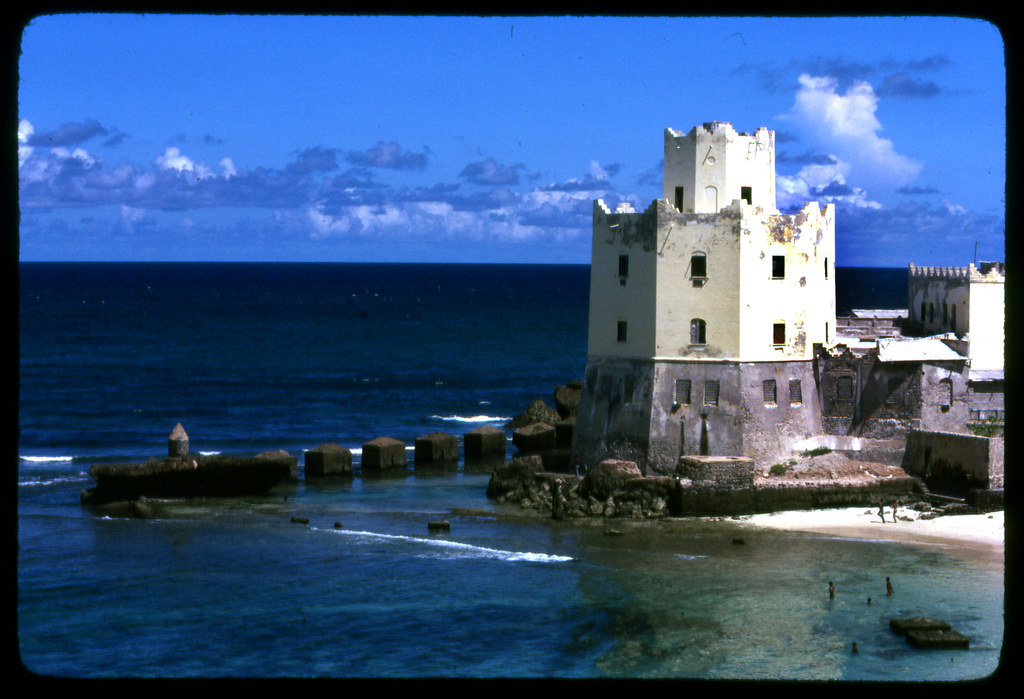
6. **The Ill-fated Encounter with La Couronne (1600s)**
The 1600s saw pirates actively prowling the Mediterranean Sea, a vital conduit for trade between continents. In one such instance, a group of these raiders mistakenly identified the French warship La Couronne as a merchant vessel. Eager for what they perceived would be valuable loot, they launched a brazen attack, believing they had chanced upon an easy and lucrative target. This error in judgment would prove to be severely costly.
However, the French crew aboard La Couronne was not only well-prepared for any eventuality but also highly experienced in naval combat. They were far from the untrained or lightly armed merchant sailors the pirates had anticipated. Upon engaging, the pirates were met with fierce and disciplined resistance. The French crew effectively repelled the pirate assault, delivering a devastating force that quickly turned the tide of the engagement.
The encounter ended disastrously for the pirates, who suffered heavy losses in personnel and vessels. This event stands as a cautionary tale, underscoring the profound dangers of making assumptions in maritime warfare and highlighting the absolute necessity for accurate intelligence gathering. The pirates’ blunder cost them dearly, emphasizing the unpredictable and often brutal nature of naval confrontations when attacking a formidable warship.
Military equipment: Los Angeles Class Fast Attack Submarine
Manufacturer: Newport News Shipbuilding Co.; General Dynamics Electric Boat Division.
Service: USN
Armament: Tomahawk missiles, VLS tubes (SSN 719 and later), MK48 torpedoes, four torpedo tubes.
Propulsion: One nuclear reactor, one shaft
Speed: 25+ knots
Crew: 16 Officers; 127 Enlisted
Categories: Attack Submarines, Navy Equipment, Navy Ships and Submarines, Ships and Submarines, Special Operations Equipment
Get more information about: Los Angeles Class Fast Attack Submarine
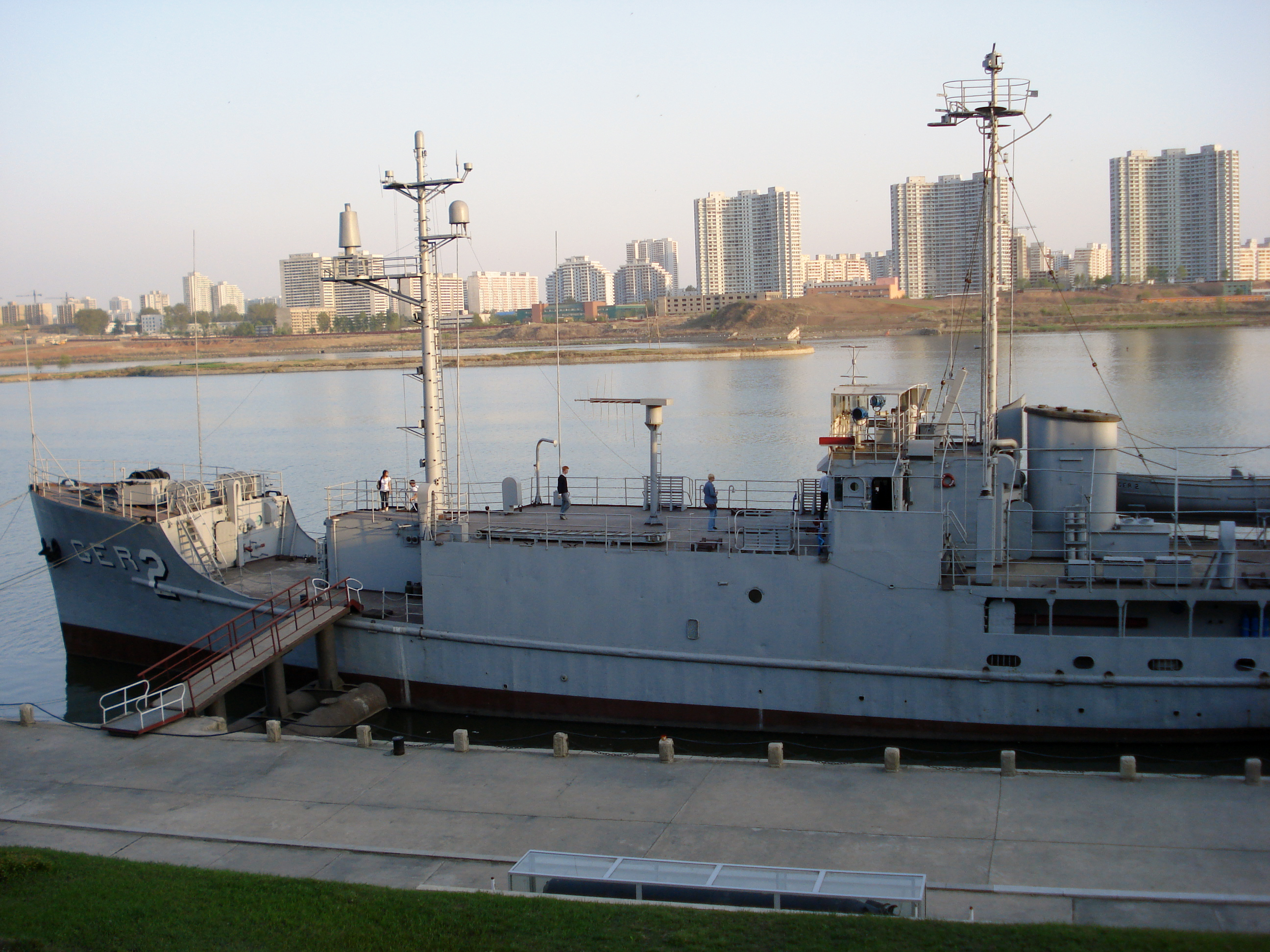
7. **The Surprise Engagement with USS Pueblo (Cold War)**
During the tense geopolitical climate of the Cold War, the USS Pueblo, an American intelligence ship, was conducting critical surveillance operations in international waters. Its mission was clandestine, and its appearance might have suggested a less threatening profile to an uninformed observer. This subtle guise, however, became the basis for a significant misjudgment by a group of pirates who saw an opportunity.
Mistaking the advanced intelligence ship for an ordinary, less-defended vessel, these pirates attempted to seize it, presumably for its perceived commercial value or perhaps to demonstrate their prowess. This act of aggression, directed at a highly sensitive military asset, posed considerable international implications beyond a simple act of piracy. The pirates greatly underestimated the ship’s true purpose and the network of support it commanded.
Fortunately for the USS Pueblo, the crew’s quick thinking and the ship’s robust communications capabilities enabled them to rapidly call for backup. Naval forces were promptly alerted and soon arrived on the scene, altering the balance of power decisively. Faced with the sudden arrival of overwhelming military support, the pirates were forced to retreat, their ill-conceived plans thoroughly thwarted. This incident vividly illustrates the critical role of superior communication and extensive support networks in modern naval operations, reinforcing the importance of recognizing the complexities of military presence on the seas.
The incidents examined thus far illuminate a recurring theme: the catastrophic consequences when pirates, driven by the prospect of easy plunder, fundamentally misinterpret the nature of their intended targets. Yet, these examples represent only a fraction of the historical narrative, underscoring the enduring lesson that underestimating naval power or encountering unexpected resilience invariably shifts the balance of power from the aggressor to the defender. This section delves into further significant cases, both historical and contemporary, where such miscalculations led to dramatic reversals of fortune for pirate groups. These episodes reinforce the critical importance of accurate reconnaissance and the profound risks inherent in maritime aggression against formidable, and often deceptively powerful, adversaries. They serve as potent reminders of the unpredictable and perilous world of piracy.
Military equipment: USS Pueblo (AGER-2)
InfoboxCaption: true
ShipImage: Pueblo-at-Pyongyang-Museum-2014.jpg
ShipCaption: Pueblo in North Korea, 2014
ShipCountry: United States
ShipFlag: USN flag
ShipName: Pueblo
ShipNamesake: Pueblo, Colorado
ShipBuilder: Kewaunee Shipbuilding and Engineering
ShipLaidDown: 1944
ShipLaunched: 16 April 1944
ShipCommissioned: 7 April 1945
ShipInService: 1945
ShipReclassified: 13 May 1967: AGER-2
ShipHonors: Korean Defense Service Medal,Combat Action Ribbon (retroactive)
ShipCaptured: 23 January 1968
ShipFate: Coord
ShipStatus: North Korea
PortCommander: Colonel Francis E. Scanlan
ShipBadge: File:USS Pueblo AGER-2 Crest.png
ShipClass: Camano-class cargo ship,sclass
ShipType: (as converted) Intel-Gathering Vessel
ShipDisplacement: 550 tons light, 895 tons full
ShipTonnage: dead weight tonnage
ShipLength: 177 ft
Abbr: on
ShipBeam: 32 ft
ShipDraft: 9 ft
ShipPropulsion: two 500hp GM Cleveland Division 6-278A 6-cyl V6 Diesel engines
ShipSpeed: 12.7 kn
ShipComplement: 6 officers, 70 men
ShipArmament: M2 Browning
Categories: 1944 ships, 1960s in the United States, 1968 in North Korea, 1968 in military history, 1968 in the United States
Summary: USS Pueblo (AGER-2) is a Banner-class technical research ship, placed into service during World War II, then converted to a spy ship in 1967 by the United States Navy. She gathered intelligence and oceanographic information, monitoring electronic and radio signals from North Korea. On 23 January 1968, the ship was attacked and captured by a North Korean vessel, in what became known as the “Pueblo incident”.
The seizure of the U.S. Navy ship and her 83 crew members, one of whom was killed in the attack, came less than a week after President Lyndon B. Johnson’s State of the Union address to the United States Congress, a week before the start of the Tet Offensive in South Vietnam during the Vietnam War and three days after 31 men of North Korea’s KPA Unit 124 had crossed the Korean Demilitarized Zone (DMZ) and killed 26 South Koreans and 4 Americans in an attempt to attack the South Korean Blue House (executive mansion) in the capital Seoul. The taking of Pueblo and the abuse and torture of her crew during the next eleven months became a major Cold War incident, raising tensions between western and eastern powers.
North Korea stated that Pueblo deliberately entered their territorial waters 7.6 nautical miles (14 km) away from Ryo Island, and that the logbook shows that they intruded several times. However, the United States maintained that the vessel was in international waters at the time of the incident and that any purported evidence supplied by North Korea to support its statements was fabricated. Pueblo remains held in North Korea, officially a commissioned vessel of the United States Navy.
Since early 2013, the ship has been moored along the Pothonggang Canal in Pyongyang and is displayed there as a museum ship at the Victorious War Museum. Pueblo is the only ship of the U.S. Navy still on the commissioned roster and held captive.
Get more information about: USS Pueblo (AGER-2)

8. **The Encounter with HMS Victory**
In the 18th century, a period often characterized by bustling maritime trade and the pervasive threat of piracy, opportunistic raiders frequently scoured the Atlantic for lucrative targets. During one such foray, a group of pirates identified what they believed to be a richly laden merchant ship, envisioning a swift and profitable act of plunder. Their intelligence, however, proved fatally flawed, setting them on a collision course with one of the most iconic warships in naval history.
Unbeknownst to the pirates, the vessel they had chosen to pursue was HMS Victory, the venerated flagship of the British Royal Navy. Far from being a defenseless cargo carrier, the Victory was a ship of the line, renowned for its formidable firepower and its highly disciplined, experienced crew. As the pirates closed the distance, the reality of their grave error became horrifyingly clear, transforming their predatory pursuit into an instant struggle for survival against overwhelming odds.
The ensuing engagement was predictably brief but intensely fierce. HMS Victory, with its impressive broadsides and the unwavering resolve of its crew, quickly unleashed its superior armaments. The pirates’ vessels, outmatched and outgunned, were left in disarray, their audacious plans shattered by the sheer might of the Royal Navy. This clash vividly illustrated the swift and decisive consequences that often follow such profound errors in target identification on the high seas.
The encounter with HMS Victory serves as a poignant historical marker, emphasizing the immense risks inherent in underestimating the true identity and capabilities of a vessel. It underscores that even in an era rife with maritime lawlessness, challenging the might of a renowned warship, particularly a flagship, almost invariably leads to a crushing defeat, solidifying its place as a classic cautionary tale in naval annals.
Military equipment: HMS Victory
ShipImage: multiple images
Perrow: 1 2
TotalWidth: 250px
Align: center
ShipCaption: Clockwise from top: HMS Victory at Portsmouth Historic Dockyard, view of the ship’s stern, Bird’s-eye view of Victory in 2004, on harbour service circa 1900, view of the bow.
ShipCountry: United Kingdom
ShipFlag: shipboxflag
ShipName: HMS Victory
ShipOrdered: 14 July 1758
ShipBuilder: Chatham Dockyard
ShipLaidDown: 23 July 1759
ShipLaunched: start date and age
ShipCommissioned: 1778
ShipInService: #expr:CURRENTYEAR-1778 years
ShipHomeport: Portsmouth Historic Dockyard
ShipStatus: First Sea Lord
ShipHonours: Battle of Cape Spartel
ShipClass: first-rate,ship of the line
ShipDisplacement: Long ton
ShipTonsBurthen: Builder’s Old Measurement
ShipLength: 186 ft
Abbr: on
ShipBeam: 51 ft
ShipDraught: 28 ft
ShipHoldDepth: 21 ft
ShipPropulsion: 6510 sqyd
ShipSailPlan: Full-rigged ship
ShipSpeed: 11 kn
ShipComplement: Approximately 850
ShipArmament: 32-pounder 56 cwt,24-pounder long gun,Upper gundeck: 30 × 1.7-ton short 12-pounders (5 kg),Quarterdeck: 12 × 1.7-ton short 12-pounder (5 kg),carronade
ShipNotes: Height from waterline to top of mainmast: 205 ft (62.5 m)
Categories: 1765 ships, Articles with short description, CS1: unfit URL, Commons category link is on Wikidata, Coordinates on Wikidata
Summary: HMS Victory is a 104-gun first-rate wooden sailing ship of the line. With 247 years of service as of 2025, she is the world’s oldest naval vessel still in commission. She was ordered for the Royal Navy in 1758, during the Seven Years’ War and laid down in 1759. That year saw British victories at Quebec, Minden, Lagos and Quiberon Bay and these may have influenced the choice of name when it was selected in October the following year. In particular, the action in Quiberon Bay had a profound effect on the course of the war; severely weakening the French Navy and shifting its focus away from the sea. There was therefore no urgency to complete the ship and the signing of the Treaty of Paris in February 1763 meant that when Victory was finally floated out in 1765, she was placed in ordinary. Her construction had taken 6,000 trees, 90% of them oak.
Victory was first commissioned in March 1778 during the American Revolutionary War, seeing action at the First Battle of Ushant in 1778, shortly after France had openly declared her support for Britain’s rebel colonies in North America, and the Second Battle of Ushant in 1781. After taking part in the relief of Gibraltar in 1782, Victory, and the fleet she was sailing with, encountered a combined Spanish and French force at the Battle of Cape Spartel. Much of the shot from the allied ships fell short and the British, with orders to return to the English Channel, did not bother to reply. This was her last action of the war; hostilities ended in 1783 and Victory was placed in ordinary once more.
In 1787, Victory was ordered to be fitted for sea following a revolt in the Netherlands but the threat had subsided before the work had been completed. She was ready for the Nootka Crisis and Russian Armament in 1790 but both events were settled before she was called into action. During the French Revolutionary War, Victory served in the Mediterranean Fleet, co-operating in the occupation of Toulon in August and the Invasion of Corsica between February and August 1794. She was at the Battle of the Hyeres Islands in 1795 and the Battle of Cape St Vincent in 1797. When Admiral Horatio Nelson was appointed Commander-in-Chief of the Mediterranean Fleet in 1803, he hoisted his flag aboard Victory and in 1805 took her into action at the Battle of Trafalgar. She served as a harbour ship from 1824 until 1922, when she was placed in dry dock at Portsmouth, England. Here she was repaired and is now maintained as a museum ship. From October 2012 Victory has been the flagship of the First Sea Lord.
Get more information about: HMS Victory
Read more about: Davao City Unveiled: 12 Deep Dives into Mindanao’s Most Dynamic Metropolis
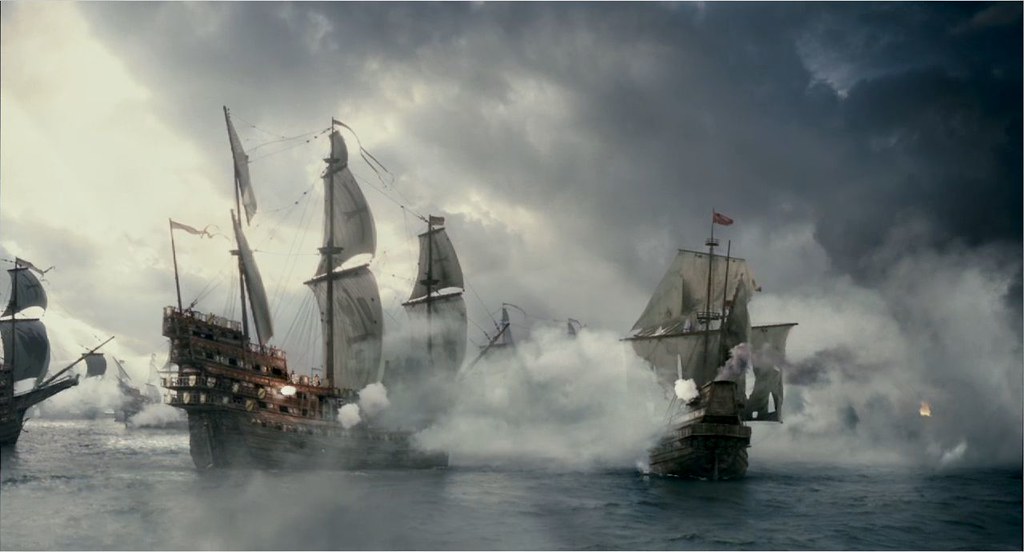
9. **The Botched Raid on the Spanish Armada**
In the late 1500s, an era defined by naval power projection and fierce geopolitical rivalries, a group of pirates embarked on what they anticipated would be a lucrative venture. Their intelligence, however imperfect, led them to believe they had discovered a convoy of vulnerable Spanish merchant ships, ripe for the taking. This critical miscalculation set the stage for an encounter of truly monumental proportions, far beyond the scope of their typical depredations.
Instead of a defenseless commercial flotilla, these pirates had inadvertently stumbled upon the Spanish Armada itself. This formidable fleet was not merely a collection of transport vessels but a meticulously organized naval force, celebrated for its strategic prowess, numerical superiority, and the robust armament of its warships. The realization of their colossal error dawned upon the pirates as they confronted a display of naval might that vastly surpassed their wildest estimations and capabilities.
The confrontation quickly devolved into a decisive rout for the pirates. Facing overwhelming odds and the concentrated firepower of the Spanish fleet, their vessels were outmatched and outmaneuvered. Any illusions of plunder swiftly evaporated as they were forced into a desperate and disorganized flight, their ambitions for an easy victory utterly shattered by the formidable force they had so carelessly engaged.
This misadventure stands as a stark testament to the formidable reputation and enduring power of the Spanish Armada, a force that fundamentally reshaped naval warfare. It offers an enduring lesson in the absolute necessity of comprehensive intelligence gathering and the profound peril of underestimating one’s adversary, particularly when that adversary represents a significant global power. The pirates’ misstep became a historical reminder of the dire consequences that can result from rash and uninformed decisions at sea.
Military equipment: Invasions of the British Isles
Categories: All articles covered by WikiProject Wikify, All articles to be expanded, All pages needing cleanup, Articles covered by WikiProject Wikify from July 2020, Articles to be expanded from October 2010
Summary: Invasions of the British Isles have occurred several times throughout their history. The British Isles have been subject to several waves of invasion and settlement since humans began inhabiting the region approximately 900,000 years ago during the Paleolithic. Notable invasions of the British Isles including the Roman conquest of Britain, Viking expansion, the Norman Conquest, the Anglo-Norman invasion of Ireland and the Glorious Revolution.
Get more information about: Invasions of the British Isles
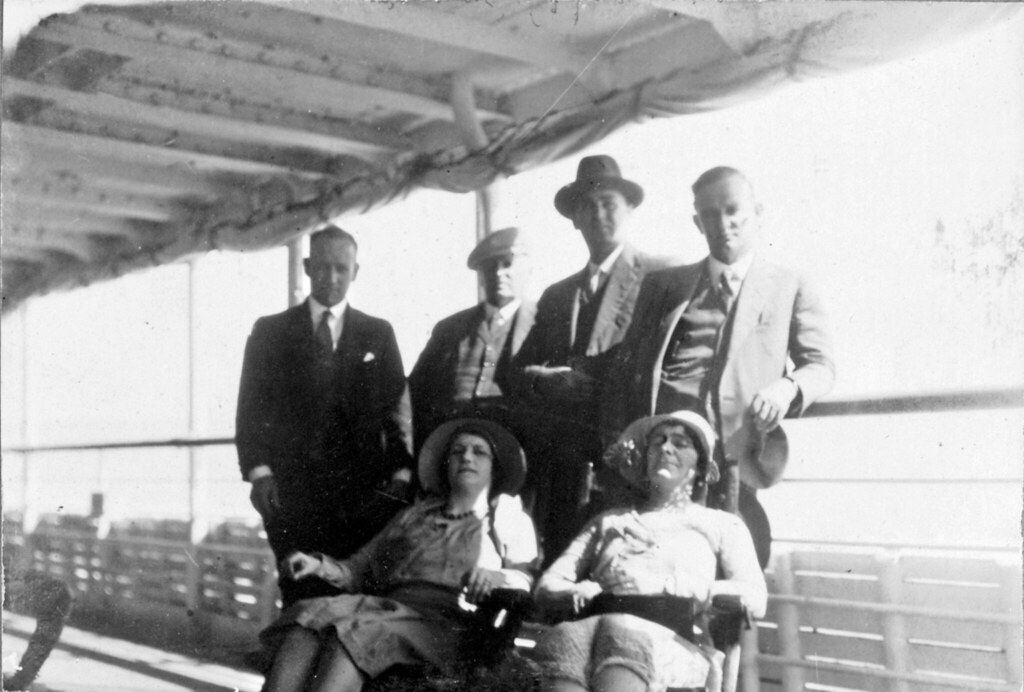
10. **The Unexpected Resistance of SS Politician**
During the tumultuous period of the 1940s, a time when wartime conditions could often create opportunities for illicit activities, pirates operating off the Scottish coast identified what appeared to be an opportune target: the SS Politician. They perceived it as a standard, defenseless cargo ship, a seemingly easy prize that would yield valuable goods with minimal resistance. This assumption, however, proved to be a significant underestimation of the human element at play.
Contrary to the pirates’ expectations, the crew of the SS Politician refused to capitulate without a fight. Instead of surrendering to the aggressors, they mounted a fierce and unexpected resistance, employing clever tactics and demonstrating remarkable resolve to defend their vessel and its cargo. This unyielding defiance caught the pirates entirely off-guard, disrupting their well-rehearsed boarding procedures and turning the tables on their perceived advantage.
Unprepared for such determined opposition, the pirates found themselves in an unforeseen struggle, losing their initial momentum and strategic advantage. Their attempts to overpower the tenacious crew were ultimately thwarted, forcing them to retreat empty-handed from what they had confidently anticipated would be an effortless capture. The incident underscored the inherent unpredictability of maritime encounters, where even seemingly vulnerable targets can harbor unexpected wells of resilience.
The SS Politician incident became a compelling narrative of courage and cunning at sea, illustrating how the sheer determination of a crew can transform a potentially straightforward pirate victory into a notable defeat for the aggressors. It highlighted that genuine vulnerability is not always easily discernible and that human fortitude can be a formidable, and often underestimated, defense against those seeking easy plunder.
Military equipment: German resistance to Nazism
Categories: All articles needing additional references, All articles with incomplete citations, All articles with unsourced statements, Anti-fascism in Germany, Articles containing German-language text
Summary: The German resistance to Nazism (German: Widerstand gegen den Nationalsozialismus) included unarmed and armed opposition and disobedience to the Nazi regime by various movements, groups and individuals by various means, from attempts to assassinate Adolf Hitler or to overthrow his regime, defection to the enemies of the Third Reich and sabotage against the German Army and the apparatus of repression and attempts to organize armed struggle, to open protests, rescue of persecuted persons, dissidence and “everyday resistance”.
German resistance was not recognized as a united resistance movement during the height of Nazi Germany, unlike the more organised efforts in other countries, such as Italy, Denmark, the Soviet Union, Poland, Greece, Yugoslavia, France, the Netherlands, Czechoslovakia, and Norway. The German resistance consisted of small, isolated groups that were unable to mobilize mass political opposition. Individual attacks on Nazi authority, sabotage, and the disclosure of information regarding Nazi armaments factories to the Allies, as by the Austrian resistance group led by Heinrich Maier, occurred. One strategy was to persuade leaders of the Wehrmacht to stage a coup d’état against the regime; the 20 July plot of 1944 against Hitler was intended to trigger such a coup. Hundreds of thousands of Germans had deserted from the Wehrmacht, many defected to the Allies or the anti-Fascist resistance forces, and after 1943, the Soviet Union made attempts to launch a guerrilla warfare in Germany with such defectors and allowed the members of the National Committee for a Free Germany which consisted mostly of the German prisoners of war to be engaged in the military operations of the Red Army and form small military units.
It has been estimated that during the course of World War II 800,000 Germans were arrested by the Gestapo for resistance activities. It has also been estimated that between 15,000 and 77,000 of the Germans were executed by the Nazis. Resistance members were usually tried, mostly in show trials, by Sondergerichte (Special Courts), courts-martial, People’s Courts, and the civil justice system. Many of the Germans had served in government, the military, or in civil positions, which enabled them to engage in subversion and conspiracy. The Canadian historian Peter Hoffmann counts unspecified “tens of thousands” in Nazi concentration camps who were either suspected of or engaged in opposition. The German historian Hans Mommsen wrote that resistance in Germany was “resistance without the people” and that the number of those Germans engaged in resistance to the Nazi regime was very small. The resistance in Germany included members of the Polish minority who formed resistance groups like Olimp.
Get more information about: German resistance to Nazism
Read more about: 18 ’60s Movie Stars Who Vanished After Their Big Break: A Deep Dive into the Decade’s Most Mysterious Exits

11. **The Misadventure with the German Battleship Bismarck**
In the intense theater of World War II, a time of unprecedented naval warfare, a group of pirates made an astonishing misjudgment that underscored the perils of operating without accurate intelligence. They identified a massive vessel, which they erroneously believed to be a merchant ship laden with valuable wartime cargo, ripe for illicit acquisition. This egregious error of identity placed them in direct confrontation with one of the most powerful warships of its era.
Unaware of its true identity and formidable capabilities, these pirates approached with the brazen intent to capture what they perceived as a vulnerable target. Their chosen prey, however, was none other than the German battleship Bismarck, a vessel renowned for its immense size, impenetrable armor, and devastating armament. The realization of their colossal mistake arrived too late, as they found themselves face-to-face with the epitome of naval engineering and destructive power.
The encounter was, as might be expected, remarkably brief and utterly disastrous for the pirates. Confronted with the Bismarck’s vastly superior firepower and the disciplined response of its crew, any thoughts of capture swiftly dissipated into a desperate attempt to escape. Their vessels were quickly overwhelmed, forcing a hasty and ignominious retreat, their illicit ambitions thoroughly thwarted by the sheer might they had so carelessly provoked.
This episode serves as a powerful historical testament to the critical importance of thorough reconnaissance in naval operations, particularly during periods of global conflict. The Bismarck’s formidable reputation and overwhelming firepower left an indelible mark, highlighting the drastic consequences that can ensue from target misidentification and the heavy price paid for such errors in judgment against a genuine warship.
Military equipment: History of submarines
Categories: All articles needing additional references, All articles with unsourced statements, All articles with vague or ambiguous time, Articles incorporating Cite DNB template, Articles needing additional references from January 2021
Summary: The history of the submarine goes back to antiquity. Humanity has employed a variety of methods to travel underwater for exploration, recreation, research and significantly, warfare. While early attempts, such as those by Alexander the Great, were rudimentary, the advent of new propulsion systems, fuels, and sonar, propelled an increase in submarine technology. The introduction of the diesel engine, then the nuclear submarine, saw great expansion in submarine use — and specifically military use — during World War I, World War II, and the Cold War.
The Second World War use of the U-Boat by the Kriegsmarine against the Royal Navy and commercial shipping, and the Cold War’s use of submarines by the United States and Russia, helped solidify the submarine’s place in popular culture. The latter conflicts also saw an increasing role for the military submarine as a tool of subterfuge, hidden warfare, and nuclear deterrent. The military use of submarines continues to this day, predominantly by North Korea, China, the United States and Russia.
Beyond their use in warfare, submarines continue to have recreational and scientific uses. They are heavily employed in the exploration of the sea bed, and the deepest places of the ocean floor. They are used extensively in search and rescue operations for other submarines, surface vessels, and air craft, and offer a means to descend vast depths beyond the reach of scuba diving for both exploration and recreation. They remain a focus of popular culture and the subject of numerous books and films.
Get more information about: History of submarines
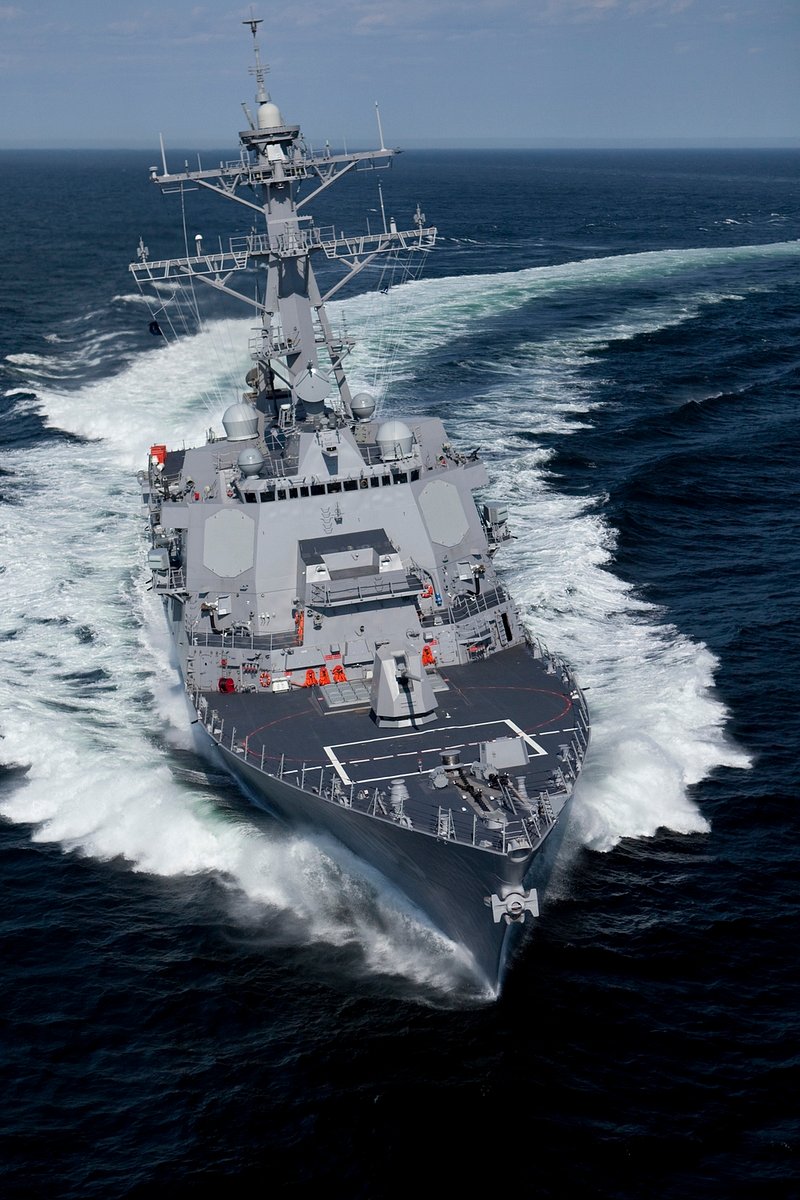
12. **The USS Nicholas Incident (2010)**
Four years after the widely publicized incident involving the USS Cape St. George and USS Gonzalez, another significant engagement unfolded off the coast of Africa, further illustrating the ongoing challenges of piracy and the inherent dangers for those who misidentify naval assets. The guided-missile frigate USS Nicholas (FFG 47), a vessel integral to modern maritime security operations, became the subject of an audacious attack by pirate elements.
In this instance, pirates, likely operating under the mistaken belief that the frigate was a commercial vessel, launched an assault. While the specific details of their initial approach remain less extensively documented than some larger engagements, the underlying miscalculation of confronting a fully operational warship was consistently present. The pirates’ intent to seize or incapacitate the vessel quickly clashed with the advanced capabilities and vigilant crew of the USS Nicholas.
The confrontation resulted in a decisive victory for the U.S. Navy. The USS Nicholas successfully repelled the attack, leading to the capture of the aggressors. Following this incident, a CBS News report confirmed the attack, and later, the BBC reported that five captured pirates involved were given life sentences for their acts of piracy. This outcome represented a clear message regarding the legal ramifications of such illicit maritime activities.
This incident underscored the evolving strategies in anti-piracy efforts, moving beyond immediate tactical responses to comprehensive legal consequences. The severe sentencing of the captured pirates demonstrated an international commitment to deterring maritime crime, reinforcing that misjudgment against naval forces carries not only immediate defeat but also long-term, life-altering repercussions.
Military equipment: USS Pueblo (AGER-2)
InfoboxCaption: true
ShipImage: Pueblo-at-Pyongyang-Museum-2014.jpg
ShipCaption: Pueblo in North Korea, 2014
ShipCountry: United States
ShipFlag: USN flag
ShipName: Pueblo
ShipNamesake: Pueblo, Colorado
ShipBuilder: Kewaunee Shipbuilding and Engineering
ShipLaidDown: 1944
ShipLaunched: 16 April 1944
ShipCommissioned: 7 April 1945
ShipInService: 1945
ShipReclassified: 13 May 1967: AGER-2
ShipHonors: Korean Defense Service Medal,Combat Action Ribbon (retroactive)
ShipCaptured: 23 January 1968
ShipFate: Coord
ShipStatus: North Korea
PortCommander: Colonel Francis E. Scanlan
ShipBadge: File:USS Pueblo AGER-2 Crest.png
ShipClass: Camano-class cargo ship,sclass
ShipType: (as converted) Intel-Gathering Vessel
ShipDisplacement: 550 tons light, 895 tons full
ShipTonnage: dead weight tonnage
ShipLength: 177 ft
Abbr: on
ShipBeam: 32 ft
ShipDraft: 9 ft
ShipPropulsion: two 500hp GM Cleveland Division 6-278A 6-cyl V6 Diesel engines
ShipSpeed: 12.7 kn
ShipComplement: 6 officers, 70 men
ShipArmament: M2 Browning
Categories: 1944 ships, 1960s in the United States, 1968 in North Korea, 1968 in military history, 1968 in the United States
Summary: USS Pueblo (AGER-2) is a Banner-class technical research ship, placed into service during World War II, then converted to a spy ship in 1967 by the United States Navy. She gathered intelligence and oceanographic information, monitoring electronic and radio signals from North Korea. On 23 January 1968, the ship was attacked and captured by a North Korean vessel, in what became known as the “Pueblo incident”.
The seizure of the U.S. Navy ship and her 83 crew members, one of whom was killed in the attack, came less than a week after President Lyndon B. Johnson’s State of the Union address to the United States Congress, a week before the start of the Tet Offensive in South Vietnam during the Vietnam War and three days after 31 men of North Korea’s KPA Unit 124 had crossed the Korean Demilitarized Zone (DMZ) and killed 26 South Koreans and 4 Americans in an attempt to attack the South Korean Blue House (executive mansion) in the capital Seoul. The taking of Pueblo and the abuse and torture of her crew during the next eleven months became a major Cold War incident, raising tensions between western and eastern powers.
North Korea stated that Pueblo deliberately entered their territorial waters 7.6 nautical miles (14 km) away from Ryo Island, and that the logbook shows that they intruded several times. However, the United States maintained that the vessel was in international waters at the time of the incident and that any purported evidence supplied by North Korea to support its statements was fabricated. Pueblo remains held in North Korea, officially a commissioned vessel of the United States Navy.
Since early 2013, the ship has been moored along the Pothonggang Canal in Pyongyang and is displayed there as a museum ship at the Victorious War Museum. Pueblo is the only ship of the U.S. Navy still on the commissioned roster and held captive.
Get more information about: USS Pueblo (AGER-2)
Read more about: These 8 Classic Screen Detectives Would Be Fired for Bad Practices in 2024—Easily

13. **First Encounter with the French Warship La Somme (October 7)**
The French warship La Somme, a 3,800-ton naval refueling ship, plays a crucial, though sometimes understated, role in international counter-piracy operations, particularly in the waters off Somalia. Its function as a refueling vessel, essential for sustaining other warships on long patrols, inadvertently presents a profile that, under certain circumstances, can be mistaken for a less threatening civilian or commercial vessel.
Such a misidentification indeed occurred on October 7, when a group of suspected pirates approached La Somme. Operating under the erroneous assumption that they had found an easy target, these individuals launched an attempt to seize what they believed was a vulnerable civilian ship. Their predatory intentions were quickly met with the disciplined and robust response of a French Navy vessel.
The French crew, trained and prepared for such contingencies, swiftly neutralized the threat. The pirates’ attempt was thwarted, leading to the capture of five suspects. This incident highlighted the inherent risks pirates take when failing to accurately identify their targets, especially in waters patrolled by sophisticated international naval forces.
The encounter with La Somme, while less dramatic in its initial phase than some engagements, effectively demonstrated that even support vessels within a naval fleet possess the defensive capabilities and trained personnel to decisively repel piratical attacks. It underscored the strategic ambiguity that some naval assets can present, leading to costly misjudgments by would-be aggressors.
Military equipment: First Battle of Ypres
Conflict: First Battle of Ypres
Partof: Western Front (World War I)
Caption: Positions of the Allied and German armies, 19 October 1914
Date: 19 October – 22 November 1914
Place: Ypres
Coordinates: Wikidatacoord
MapType: Belgium
MapCaption: centre
MapLabel: Ypres
Result: Indecisive
Combatant1: flagcountry,Belgian government at Sainte-Adresse,flagcountry,British Empire
Commander1: Joseph Joffre,Ferdinand Foch,Albert I of Belgium,John French, 1st Earl of Ypres
Combatant2: German Empire
Commander2: Erich von Falkenhayn,Albrecht, Duke of Württemberg,Rupprecht of Bavaria,Max von Fabeck,Alexander von Linsingen
Strength1: flagicon,flagicon,flagicon,Total: 4,400,000
{{Endplainlist}}
Strength2: flagicon
Casualties1: flagicon,flagicon,flagicon
Casualties2: flagicon,{{Endplainlist}}
Notes: 134,315 German casualties in Belgium and northern France, 15 October – 24 November
Campaignbox: Campaignbox Western Front (World War I)
Campaignbox Military Operations: Belgium and northern France 1914
Campaignbox Race to the Sea
Categories: 1914 in Belgium, 1914 in France, 1914 in the United Kingdom, Articles containing French-language text, Articles containing German-language text
Summary: The First Battle of Ypres (French: Première Bataille des Flandres, German: Erste Flandernschlacht, 19 October – 22 November 1914) was a battle of the First World War, fought on the Western Front around Ypres, in West Flanders, Belgium. The battle was part of the First Battle of Flanders, in which German, French, Belgian armies and the British Expeditionary Force (BEF) fought from Arras in France to Nieuwpoort (Nieuport) on the Belgian coast, from 10 October to mid-November. The battles at Ypres began at the end of the Race to the Sea, reciprocal attempts by the German and Franco-British armies to advance past the northern flank of their opponents. North of Ypres, the fighting continued in the Battle of the Yser (16–31 October), between the German 4th Army, the Belgian army and French marines.
The fighting has been divided into five stages, an encounter battle from 19 to 21 October, the Battle of Langemarck from 21 to 24 October, the battles at La Bassée and Armentières to 2 November, coincident with more Allied attacks at Ypres and the Battle of Gheluvelt (29–31 October), a fourth phase with the last big German offensive, which culminated at the Battle of Nonne Bosschen on 11 November, then local operations which faded out in late November. Brigadier-General James Edmonds, the British official historian, wrote in the History of the Great War, that the II Corps battle at La Bassée could be taken as separate but that the battles from Armentières to Messines and Ypres, were better understood as one battle in two parts, an offensive by III Corps and the Cavalry Corps from 12 to 18 October against which the Germans retired and an offensive by the German 6th Army and 4th Army from 19 October to 2 November, which from 30 October, took place mainly north of the Lys, when the battles of Armentières and Messines merged with the Battles of Ypres.
Attacks by the BEF (Field Marshal Sir John French) the Belgians and the French Eighth Army in Belgium made little progress beyond Ypres. The German 4th and 6th Armies took small amounts of ground, at great cost to both sides, during the Battle of the Yser and further south at Ypres. General Erich von Falkenhayn, head of the Oberste Heeresleitung (OHL, the German General Staff), then tried a limited offensive to capture Ypres and Mont Kemmel (Kemmelberg), from 19 October to 22 November. Neither side had moved forces to Flanders fast enough to obtain a decisive victory and by November both sides were exhausted. The armies were short of ammunition, suffering from low morale and some infantry units refused orders. The autumn battles in Flanders had become static, attrition operations, unlike the battles of manoeuvre in the summer. French, British and Belgian troops, in improvised field defences, repulsed German attacks for four weeks. From 21 to 23 October, German reservists had made mass attacks at Langemarck (Langemark), with losses of up to 70 per cent, to little effect.
Warfare between mass armies, equipped with the weapons of the Industrial Revolution and its later developments, proved to be indecisive, because field fortifications neutralised many classes of offensive weapon. The defensive firepower of artillery and machine guns dominated the battlefield and the ability of the armies to supply themselves and replace casualties prolonged battles for weeks. Thirty-four German divisions fought in the Flanders battles, against twelve French, nine British and six Belgian divisions, along with marines and dismounted cavalry. Over the winter, Falkenhayn reconsidered Germany strategy because Vernichtungsstrategie and the imposition of a dictated peace on France and Russia had exceeded German resources. Falkenhayn devised a new strategy to detach either Russia or France from the Allied coalition through diplomacy as well as military action. A strategy of attrition (Ermattungsstrategie) would make the cost of the war too great for the Allies, until one dropped out and made a separate peace. The remaining belligerents would have to negotiate or face the Germans concentrated on the remaining front, which would be sufficient for Germany to inflict a decisive defeat.
Get more information about: First Battle of Ypres

14. **Second Encounter with the French Warship La Somme (Early Tuesday)**
The lessons from the October 7 incident regarding La Somme evidently did not deter all pirate groups, as the French refueling ship once again found itself targeted, reinforcing the persistent and audacious nature of maritime piracy. In the early morning hours of an unspecified Tuesday, far off the Somalian coast, two skiffs carrying suspected pirates launched another attack on La Somme.
Colonel Patrick Steiger, a military spokesman, detailed that the attackers fired approximately eight rounds from automatic weapons at the vessel, though mercifully, all shots missed. In response, the crew of La Somme fired three warning shots, a clear signal of their military status and readiness. Recognizing their profound error, the two skiffs attempted to flee in different directions, initiating a pursuit.
The French crew’s vigilance and swift action led them to discover what appeared to be a mothership, used by pirates to extend their range, complete with stocks of fuel and two suspected pirates aboard. A chase ensued, resulting in the capture of one skiff and four more pirates. Along with their automatic weapons, grappling hooks—tools of their trade for boarding unsuspecting vessels—were also found, providing clear evidence of their intent.
This second engagement with La Somme resulted in the apprehension of six pirates in total, five of whom sustained injuries. Colonel Steiger noted that La Somme’s less aggressive appearance, especially during nighttime hours, likely contributed to its repeated misidentification. The captured pirates awaited orders regarding their fate, with France being a key member of Operation Atalante, known for aggressively tracking and prosecuting pirates. This incident further emphasized the continuous cat-and-mouse game between naval forces and piratical elements, with grave consequences for those who misjudge their targets.
Military equipment: September 1915
Categories: All articles with broken links to citations, All articles with dead external links, All articles with unsourced statements, Articles with dead external links from February 2019, Articles with dead external links from January 2025
Summary: The following events occurred in September 1915:
Get more information about: September 1915
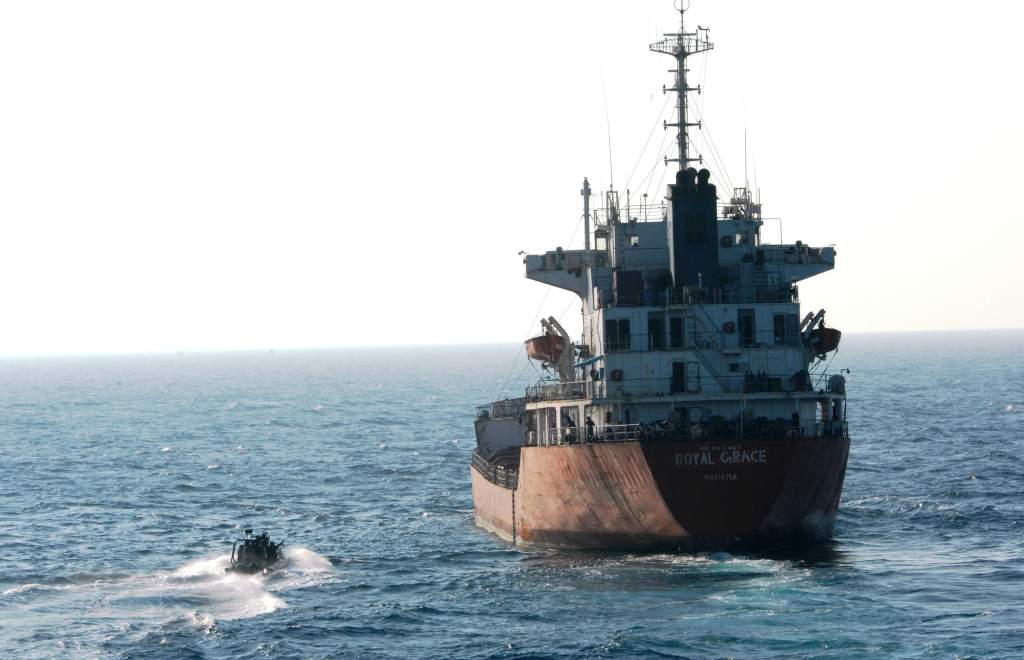
15. **The Dramatic Events Involving the Spanish Navy’s Patiño**
One of the most vividly documented instances of pirate miscalculation occurred in the early morning hours of January 12, 2012, amidst heavy seas and marginal weather conditions off the coast of Somalia. A group of seven Somali pirates, confident in their predatory mission, spotted what they believed to be a defenseless cargo vessel at anchor. Under the cover of low light, around 0300 hours, they launched their assault, aiming to seize the unsuspecting ship and its valuable cargo.
Racing towards their perceived prize, the Somali pirates initiated their attack by opening fire with AK-47s as they approached the ship’s hull, intending to board. The vessel’s crew, seemingly caught off guard during the severe nighttime weather, became aware of the small pirate skiff only after the attack had already commenced. This brief moment of vulnerability, however, belied a far more formidable reality that would soon unfold.
Most unfortunately for the pirates, and much to their profound surprise, the ‘defenseless cargo vessel’ they were attacking was, in fact, a warship of the Spanish Navy. It was none other than the Patiño, a replenishment oiler and the flagship for the European Union’s counter-piracy fleet, displacing over 17 thousand long tons. This was no merchant ship; it was a fully operational military vessel, devoid of commercial cargo, but bristling with defenses and manned by over 150 armed Spanish Marines, two Oerlikon 20 mm cannons, and two Izar FABA Systems Meroka 20 mm close-in weapon system cannons.
The pirates, now alongside what they had so painfully mistaken for a helpless merchant ship, were quickly overwhelmed by Patiño’s heavy return fire. Their desperate attempts to board were instantly repelled, forcing them to turn their skiff away and attempt a frantic escape. The Captain of the Spanish Navy warship, however, had no intention of allowing them to flee unpunished, dispatching one of its SH-3 Sea King helicopters to pursue the retreating skiff.
The horrified pirates, shedding their ladders and weaponry into the sea in a bid to lighten their load and increase speed, found themselves relentlessly pursued by the Spanish Navy Sea King. Despite commands delivered via megaphone to cut their engines, the pirates persisted in their flight. Ultimately, the helicopter’s door gunner laid multiple bursts of fire across the bow of their vastly outgunned skiff, bringing the dramatic chase to a decisive end and capturing six Somali pirates, five of whom were wounded.
This incident culminated in significant legal repercussions. The Audiencia Nacional of Spain ordered the detained and thoroughly regretful Somali pirates to be taken to Spain, facing charges of piracy, possession of illegal weapons, damage to government property, and assault on Spanish security forces. Despite pleading not guilty and claiming to be innocent fishermen who merely sought assistance, all six were convicted of attempted piracy in October 2013, receiving eight-year sentences. In April 2014, the prosecution successfully added an additional five years to each sentence, extending their time in a Spanish jail to between thirteen and seventeen and a half years, serving as a powerful and enduring testament to the severe consequences of maritime mistaken identity.
Military equipment: Piracy off the coast of Somalia
Categories: 2000s crimes in Somalia, 2005 crimes in Somalia, 2010s crimes in Somalia, All articles covered by WikiProject Wikify, All articles needing additional references
Summary: Piracy off the coast of Somalia occurs in the Gulf of Aden, Guardafui Channel, and Indian Ocean, in Somali territorial waters and other surrounding places and has a long troubled history with different perspectives from different communities. It was initially a threat to international fishing vessels during the early 2000s, only to rapidly escalate and expand to international shipping during the War in Somalia (2006–2009). The escalation of conflict between local Somali fishermen and foreign vessels occurred in a context where Somalia is estimated to have lost approximately $300 million annually since 1991 due to the unauthorized extraction of marine resources using harmful methods, such as dynamite fishing, which is prohibited in a number of other regions.
Coastal Somali communities report that the conflict originated from their need to defend themselves against foreign trawlers, which they allege steal fish and restrict access to traditional fishing grounds. They also claim that the dumping of toxic and nuclear waste from Europe into their waters has resulted in severe environmental damage, including the death of children. Although several narratives exist surrounding this phenomenon, the coastal groups refer to themselves as the “people’s coastguard”, and this self-designation is widely recognized.
Somali waters have high fisheries production potential, but the sustainability of those fisheries is compromised by the presence of foreign fishing vessels, a number of them fishing illegally. The Somali domestic fishing sector is small and poorly developed, whereas foreign vessels have fished in Somali waters for at least seven decades. Some foreign vessels and their crew have been viewed by Somali artisanal fishers as a threat to their traditional livelihoods. Multiple foreign vessels directly compete for fish, reducing fish populations and destroying marine habitat through bottom trawling. Foreign fishing has increased more than twenty-fold since 1981, and the most rapid increase occurred during the 1990s after the collapse of the Federal government under Siad Barre and the ensuing civil war.
Somalia was designated as a failed state by many in 1992, with extensive internal conflicts and major stability continuing until 1994
, when the Federal Government of Somalia was established, which despite the intervention and support of foreign forces, could not fully establish its authority with threats from jihadist group al-Shabaab, so Somalia remained characterised as a fragile state. This disorder meant there was no longer effective government policing of Somali waters by the Somali Navy, a weakness then exploited by often large foreign fishing boats, further threatening the livelihoods of local Somali fishing communities.
The fishing community responded by forming armed groups to deter what they perceived as invaders. These groups, using small boats such as skiffs and motorised boats, would sometimes hold vessels and crew for ransom. Some pirates have indicated that they would cease their activities if a national Somali coastguard were established that could effectively secure Somali waters. This practice grew into a lucrative trade, where large ransom payments were demanded and often paid.
These groups were then considered to be pirates, especially after they began hijacking non-fishing commercial vessels. With the region badly affected by poverty and government corruption, there was little political motivation at the local level to deal with the crisis. Large numbers of unemployed Somali youth began to see it as a means of making money. International organizations began to express concern over the new wave of piracy due to its high cost to global trade and the incentive to profiteer by insurance companies and others. Some believe that elements within Somalia collaborated with the pirates both to strengthen their political influence as well as for financial gain.
After the 1998 United States embassy bombings, the USS Cole bombing in 2000 in Aden, Yemen, followed by the September 11 attacks in 2001 on the United States, the US Navy decided to step up its activities around the Horn of Africa and the Red Sea, by establishing in stages a multinational anti-piracy coalition known as Combined Task Force 150 (CTF 150), with an Area of Responsibility (AOR) including some of the world’s busiest shipping lanes, spanning over two million square miles, covering the Red Sea, Gulf of Aden, Indian Ocean and Gulf of Oman (but not inside the Persian Gulf, which is the responsibility of CTF 152). This area is a vital artery of world trade from the Far East to Europe and the US, with thousands of shipping movements per year including the transportation of over 27 million barrels of oil. The participating nations have included Australia, Canada, Denmark, France, Germany, Italy, Netherlands, New Zealand, Pakistan, Spain, Saudi Arabia, the United Kingdom and the United States. Command of CTF 150 generally rotates between nations on a four month basis.
By 2010, these patrols succeeded in steadily reducing the number of piracy incidents. In early 2017, a few incidents of piracy were reported as the navies of Asian and European nations began to more actively rescue hijacked ships, including the bulk carrier OS35.
In January 2023, the Indian Ocean High Risk Area (HRA) was lifted by the International Maritime Bureau (IMB) due to a significant absence of Somali pirate attacks in previous years, although Somali pirates still reportedly possess the ability and resources to conduct attacks in the Gulf of Aden region.
As a derivative effect of the escalating Gaza war at the end of 2023, new piracy-related activity rose on the Somalian coast. According to the International Maritime Bureau (IMB) the first successful hijacking of a cargo vessel in the area after six years happened in December 2023. On March 17, 2024 Indian naval commandos led a rescue operation taking back control of the vessel about 500 km off the coast of Somalia, bringing the 35 Somali pirates to prosecution in Mumbai. This resurface of piracy in the area is closely linked to the unaltered root causes and the instability that the war creates in the area.
Get more information about: Piracy off the coast of Somalia
These numerous incidents, spanning centuries and technological advancements, consistently underscore a critical lesson for those who ply the illicit trade of piracy: the paramount importance of precise target identification. From the sails of the 18th century to the sophisticated guided-missile frigates of the modern era, the high seas remain an unpredictable theater where the pursuit of easy profit can, and often does, lead to confrontation with overwhelming military power. The narratives of misjudgment, from the formidable broadsides of HMS Victory to the decisive aerial pursuit by the Spanish Navy’s Patiño, serve as enduring cautionary tales. They highlight that while the allure of plunder may tempt, the consequences of underestimating a warship’s might are swift, severe, and, as many pirates have discovered, ultimately inescapable.


